Content for TS 26.502 Word version: 18.1.0
B Nmb8 User Plane ingest examples
B.1 General
B.2 Object Distribution Method
B.2.1 Object Distribution Method with pull-based ingest
B.2.2 Object Distribution Method with push-based ingest
B.3 Packet Distribution Method
B.3.1 Proxy mode
B.3.2 Forward-only mode
...
...
B Nmb8 User Plane ingest examples p. 66
B.1 General p. 66
This Annex provides an overview of the different Nmb8 User Plane protocol stacks for the distribution methods defined in clause 6. The distribution method is selected and configured at reference point Nmb2 based on Nmb10 provisioning.
B.2 Object Distribution Method p. 66
B.2.1 Object Distribution Method with pull-based ingest p. 66
Figure B.2.1-1 illustrates a setup in which the MBS Application Provider (AF/AS) makes a set of objects available to the MBSTF to be ingested using HTTP and distributed. The MBSTF handles all MBS-related complexity, e.g., converting the HTTP message payload into an IP multicast suitable protocol, adding AL-FEC, etc. The AF/AS delegates to the MBSF the delivery of MBS Service Announcement metadata to the MBS Client (i.e., IP multicast protocol details, etc.).
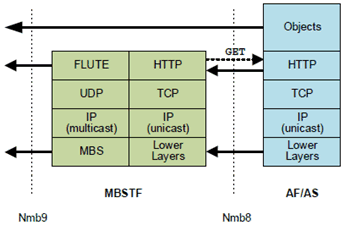
Figure B.2.1-1: Object Distribution Method using pull-based object acquisition method (HTTP GET)
(⇒ copy of original 3GPP image)
(⇒ copy of original 3GPP image)
In the special case of the MBS User Service Announcement Channel, an object manifest referencing MBS User Service Announcement documents and ancillary objects is ingested by the MBSTF from the MBS AF via reference point MBS-11. The objects listed in the object manifest are then also ingested by the same means.
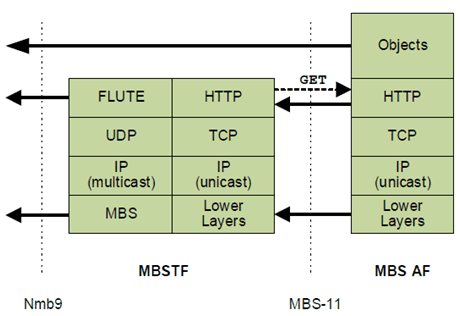
Figure B.2.1-2: MBS User Service Announcement Channel using pull-based object acquisition method (HTTP GET)
(⇒ copy of original 3GPP image)
(⇒ copy of original 3GPP image)
The following Parameters are used by the MBS Application Provider (AF/AS) at reference point Nmb10 (or, in the case of the MBS User Service Announcement Channel, by the MBSF at reference point Nmb2) to provision this setup:
- Distribution method is set to Object.
- Object acquisition method (property specific to the distribution method) is set to Pull.
-
Operating mode is set to OBJECT_SINGLE or OBJECT_COLLECTION or OBJECT_CAROUSEL or OBJECT_STREAMING, as appropriate.
- OBJECT_SINGLE: Object acquisition identifiers contains a list of object URL paths that are pulled by the MBSTF relative to the provisioned Object ingest base URL and each distributed once on the MBS Distribution Session.
- OBJECT_COLLECTION: Object acquisition identifiers contains the URL path of an object manifest describing a set of objects to be distributed once. The object manifest is pulled by the MBSTF relative to the provisioned Object ingest base URL. Objects listed in the object manifest are pulled by the MBSTF according to the time constraints specified in the object manifest (Earliest fetch time, Latest fetch time) for transmission in the MBS Distribution Session.
- OBJECT_CAROUSEL: Object acquisition identifiers contains the URL path of an object manifest describing a set of objects and their repetition and update pattern. The object manifest is pulled by the MBSTF relative to the provisioned Object ingest base URL and, if provisioned to do so, the MBSTF periodically checks for updates to it, reacquiring it as necessary. Objects listed in the object manifest are pulled by the MBSTF according to the time constraints specified in the object manifest (Earliest fetch time, Latest fetch time) for transmission in the MBS Distribution Session according to the repetition pattern indicated in the object manifest. If the update pattern in the object manifest requires it, the MBSTF periodically checks for updates to the objects, reacquiring them as necessary and updating the MBS Distribution Session accordingly.
- OBJECT_STREAMING: Object acquisition identifiers contains the URL paths of one or more Application Service Entry Point documents (e.g., a DASH MPD). The MBSTF pulls the Application Service Entry Point document(s). The objects they reference (e.g., CMAF segments) are pulled by the MBSTF and inserted into the MBS Distribution Session according to the presentation timeline in the Application Service Entry Point document(s). Ancillary objects (e.g., DASH initialisation segments) pulled by the MBSTF may additionally be inserted into the User Service Announcement Channel. The Application Service Entry Point document(s) themselves are inserted into the User Service Announcement Channel and are referenced by the User Service Announcement.
- When the Object ingest base URL and the Distribution base URL are both present, the MBSTF replaces the Object ingest base URL part of the object ingest URL with the value of the Distribution base URL for inclusion in MBS Distribution Session metadata (e.g., FLUTE FDT instances) and (in some cases) for referencing objects from the User Service Announcement.
B.2.2 Object Distribution Method with push-based ingest p. 68
Figure B.2.2-1 illustrates a setup in which the MBS Application Provider (AF/AS) pushes objects directly into the MBSTF at Nmb8 using HTTP PUT. The MBSTF handles all MBS-related complexity, e.g. converting the HTTP message payload into an IP multicast suitable protocol, adding AL-FEC, etc. The AF/AS delegates MBS delivery of Service Announcement metadata destined for the MBS Client (i.e., DASH MPD, IP multicast protocol details, etc.) to the MBSTF via MBSF.
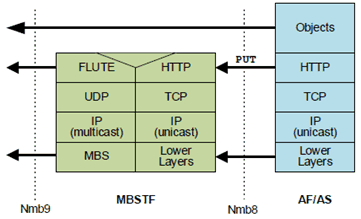
Figure B.2.2-1: Object Distribution Method using push-based object acquisition method (HTTP PUT)
(⇒ copy of original 3GPP image)
(⇒ copy of original 3GPP image)
In the special case of the MBS User Service Announcement Channel, an object manifest referencing MBS User Service Announcement documents and ancillary objects is pushed to the MBSTF by the MBSF via reference point Nmb2.
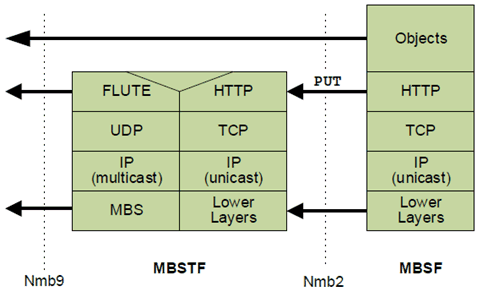
Figure B.2.2-2: Delivery of object manifest for MBS User Service Announcement channel using push-based object acquisition method (HTTP PUT)
(⇒ copy of original 3GPP image)
(⇒ copy of original 3GPP image)
The following MBS Distribution Session properties are used by the MBS Application Provider (AF/AS) at reference point Nmb10 (or, in the case of the MBS User Service Announcement Channel, by the MBSF at reference point Nmb2) to provision this setup:
- Distribution method is set to Object.
- Object acquisition method is set to Push.
-
Operating mode is set to OBJECT_SINGLE or OBJECT_COLLECTION or OBJECT_CAROUSEL or OBJECT_STREAMING, as appropriate.
- OBJECT_SINGLE: Object acquisition identifiers are ignored. Each pushed object is distributed once on the MBS Distribution Session.
- OBJECT_COLLECTION: Object acquisition identifiers contains a URL path (resolved relative to the Object ingest base URL on the MBSTF) to which an object manifest will be published describing a set of objects to be distributed once. When the object manifest is received by the MBSTF, the objects listed are pulled by the MBSTF according to the time constraints specified in the object manifest (Earliest fetch time, Latest fetch time) per Figure B.2.1-1.
- OBJECT_CAROUSEL: Object acquisition identifiers contains a URL path (resolved relative to the Object ingest base URL on the MBSTF) to which an object manifest will be published describing a set of objects and their repetition and update pattern. When the object manifest is received by the MBSTF, the objects listed are pulled by the MBSTF according to the time constraints specified in the object manifest (Earliest fetch time, Latest fetch time) for transmission in the MBS Distribution Session according to the repetition pattern indicated in the object manifest per Figure B.2.1-1 or (for the MBS User Service Announcement Channel) Figure B.2.1-2. If the update pattern in the object manifest requires it, the MBSTF periodically checks for updates to the objects, reacquiring them as necessary and updating the MBS Distribution Session accordingly.
- OBJECT_STREAMING: Object acquisition identifiers contains a non-empty set of URL paths (resolved relative to the Object ingest base URL on the MBSTF) to which Application Service Entry Point documents (e.g., DASH MPD) will be published. These and are inserted into Service Announcement. When one of the declared Application Service Entry Point documents is received by the MBSTF, the streaming session commences in accordance with the presentation timeline specified in that document. Each object (e.g. CMAF segment) pushed to the MBSTF that is part of the presentation described by the Application Service Entry Point document is distributed once in accordance with the presentation timeline.
- Object ingest base URL (assigned by the MBSF) contains the base URL at the MBSTF to which objects are published.
- Object distribution base URL (assigned by the MBSF) contains the base URL for the objects as they are distributed. The MBSTF replaces the Object ingest base URL part of the object ingest URL with the value of the Object distribution base URL for inclusion in MBS Distribution Session metadata (e.g., FLUTE FDT instances) and (in some cases) for referencing objects from the User Service Announcement.
B.3 Packet Distribution Method p. 70
B.3.1 Proxy mode p. 70
Figure B.3.1-1 illustrates a setup in which the MBS Application Provider (AF/AS) injects UDP datagrams directly into the MBSTF at reference point Nmb8. The MBSTF handles all MBS-related complexity, e.g. restamping the UDP datagram headers and/or the IP packet headers, as required for distribution. The MBSTF is not required to process the UDP payload of packets ingested at reference point Nmb8.
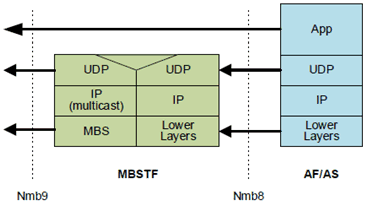
The following MBS Distribution Session properties are used by the MBS Application Provider (AF/AS) at reference point Nmb10 to provision this setup:
- Distribution method is set to Packet.
-
Operating mode is set to PACKET_PROXY.
- Packet ingest method is set to Multicast or Unicast.
- When the Packet ingest method indicates Multicast ingest, then either the MBS Application Provider (AF/AS) nominates the multicast IP address and UDP port(s) to be used for reception at reference point Nmb8, or else the MBSF allocates these values.
- When the Packet ingest method indicates Unicast ingest, the MBSTF allocates a UDP reception port for use at reference point Nmb8 and provides the reception UDP port together with the reception IP address to the MBS Application Provider (AF/AS) via the MBSF.
- The MBSF nominates the MBS-4-MC multicast group destination IP address and UDP ports to be used inside the Nmb9 unicast tunnel in the User plane traffic flow information.
B.3.2 Forward-only mode p. 71
Figure B.3.2-1 illustrates a setup in which the MBS Application Provider (AF/AS) injects multicast IP packets encapsulated in a unicast UDP/IP tunnel directly into the MBSTF. The MBSTF decapsulates the multicast IP packets from the tunnel and forwards them unmodified to the MBS Session at reference point Nmb9.
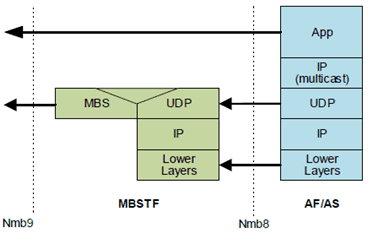
The following MBS Distribution Session properties are used by the MBS Application Provider (AF/AS) at reference point Nmb10 to provision this setup:
- Distribution method is set to Packet.
- Operating mode is set to PACKET_FORWARD_ONLY.
- Packet ingest method is set to Unicast.
- User plane traffic flow information is omitted because ingested multicast packets are not modified.
- When no FEC configuration is provided, the MBSTF pushes the packets into the Packet scheduling subfunction (see clause 4.3.3.3). The MBSTF encapsulates these packets into the Nmb9 tunnel for transmission to the MB-UPF.
- When an FEC configuration is provided, the MBSTF parses deep into the UDP payload to create AL-FEC redundancy. Source block marking is appended to source packets and the packet length fields are adjusted in UDP and IP headers. AL-FEC redundancy is inserted into the stream according to the FEC configuration. The resulting packets are handled by the Packet scheduling subfunction (see clause 4.3.3.3). The MBSTF encapsulates these packets into the Nmb9 tunnel.